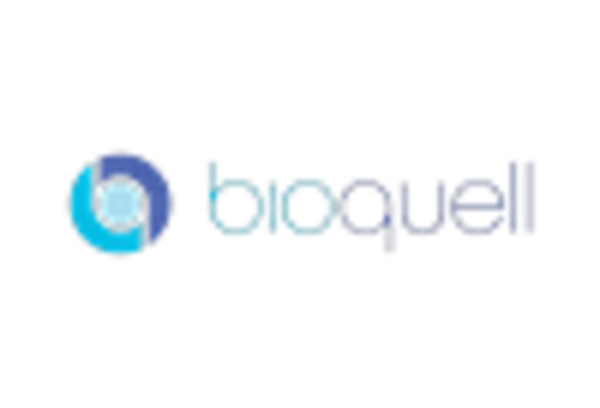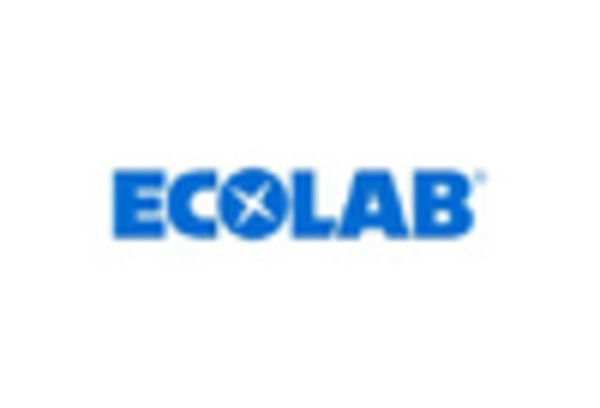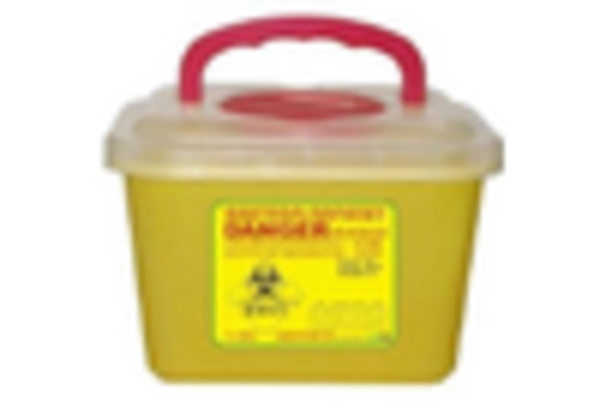The Bio-Decontamination Market is currently characterized by a dynamic competitive landscape, driven by increasing regulatory requirements and heightened awareness of infection control across various sectors, including healthcare, pharmaceuticals, and food processing. Key players such as Steris (US), Ecolab (US), and Bioquell (GB) are strategically positioned to leverage their technological advancements and extensive service networks. Steris (US) focuses on innovation in sterilization technologies, while Ecolab (US) emphasizes sustainability and water management solutions. Bioquell (GB) is known for its specialized hydrogen peroxide vapor systems, which cater to the stringent needs of healthcare facilities. Collectively, these strategies not only enhance their market presence but also shape the competitive environment by fostering a culture of continuous improvement and adaptation to emerging challenges.
In terms of business tactics, companies are increasingly localizing manufacturing and optimizing supply chains to enhance responsiveness and reduce costs. The Bio-Decontamination Market appears moderately fragmented, with a mix of established players and emerging companies vying for market share. The collective influence of these key players is significant, as they drive innovation and set industry standards, thereby influencing the overall market structure.
In August 2025, Ecolab (US) announced a strategic partnership with a leading healthcare provider to implement advanced bio-decontamination solutions across its facilities. This collaboration is expected to enhance Ecolab's service offerings and expand its footprint in the healthcare sector, aligning with the growing demand for effective infection control measures. The partnership underscores Ecolab's commitment to integrating sustainability into its operations, potentially setting a benchmark for future collaborations in the industry.
In September 2025, Steris (US) launched a new line of environmentally friendly decontamination products aimed at reducing chemical waste. This initiative not only reflects the company's dedication to sustainability but also positions it favorably in a market increasingly driven by eco-conscious consumers and regulatory pressures. The introduction of these products may enhance Steris's competitive edge by appealing to clients seeking greener alternatives in their operational practices.
In July 2025, Bioquell (GB) expanded its The Bio-Decontamination through a strategic acquisition of a local bio-decontamination firm. This move is likely to bolster Bioquell's market share and enhance its service capabilities in a region that is witnessing rapid growth in healthcare infrastructure. The acquisition may also facilitate knowledge transfer and innovation, further solidifying Bioquell's position as a leader in the bio-decontamination sector.
As of October 2025, the Bio-Decontamination Market is witnessing trends such as digitalization, sustainability, and the integration of artificial intelligence in operational processes. Strategic alliances are increasingly shaping the competitive landscape, enabling companies to pool resources and expertise to address complex challenges. Looking ahead, competitive differentiation is expected to evolve, with a shift from price-based competition to a focus on innovation, technology, and supply chain reliability. This transition may redefine market dynamics, compelling companies to invest in research and development to stay ahead in a rapidly changing environment.


















Leave a Comment